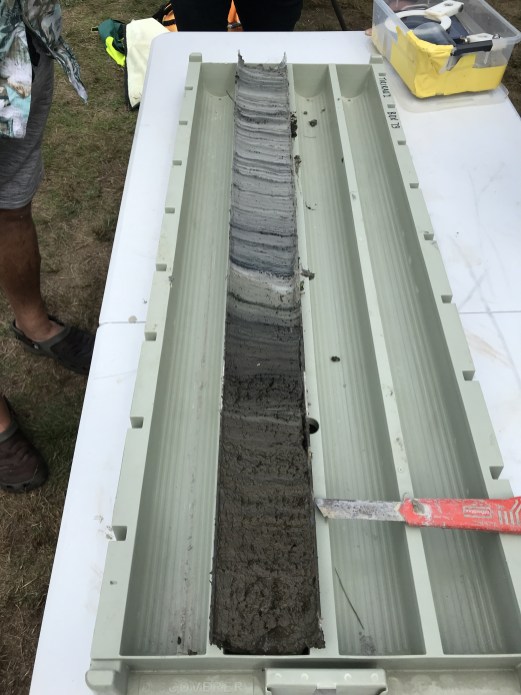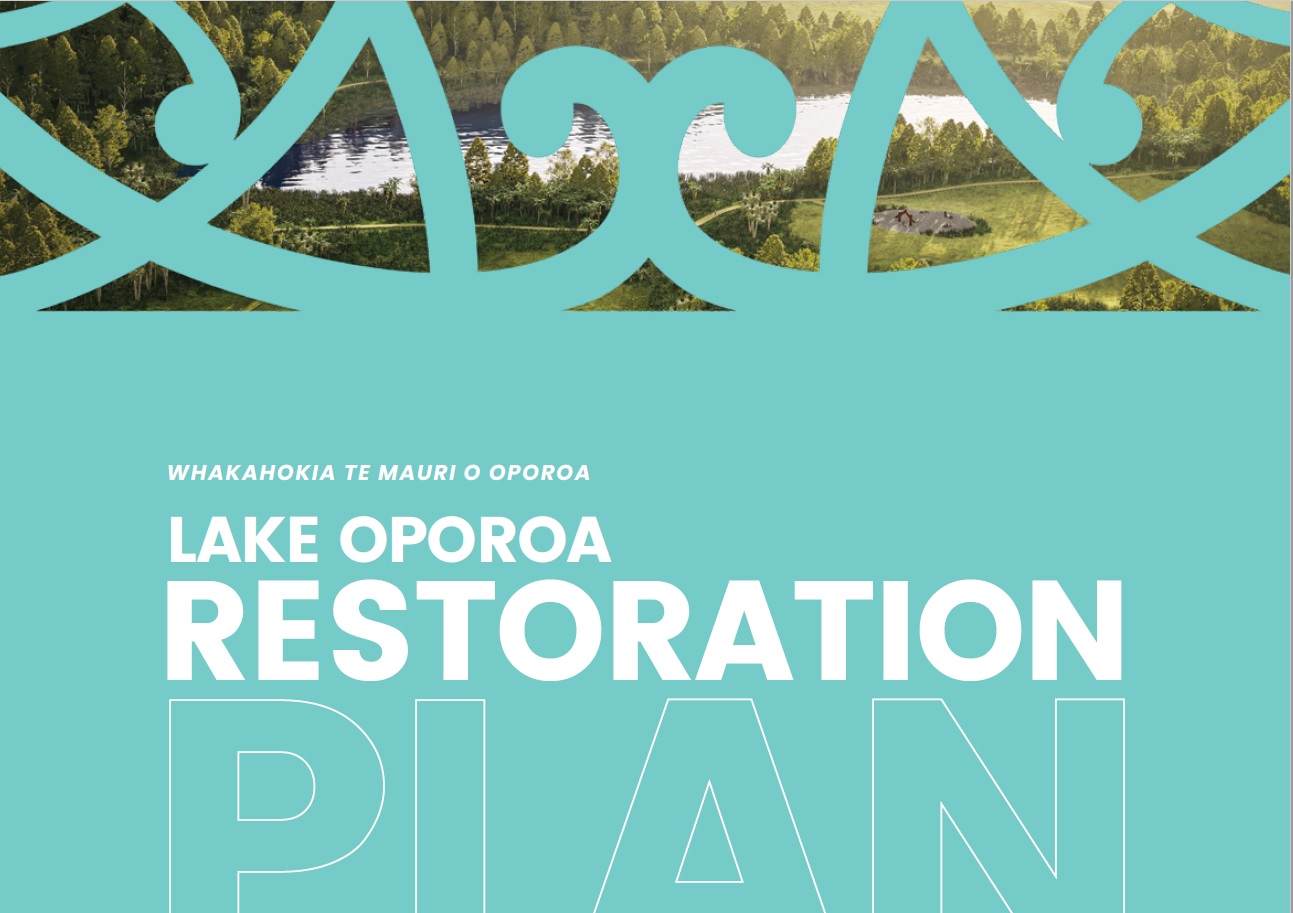Ngāti Tahu and Ngāti Whaoa mana whenua welcomed the Lakes380 team at Lake Ōkaro, opening our Te Arawa/Rotorua lakes fieldwork with karakia timatanga. Others from Te Arawa Lakes Trust, Tuhourangi Tribal Authority, GNS and Cawthron Māori Relationship Advisers, and and a local farmer who has supported wetland restoration joined us for whakawhanaungatanga – engaging on and off the water.
Following mihimihi (introductions) and kai whakanoa (refreshments), we ventured on to the water where mana whenua observed first-hand the extraction of a sediment core. On shore, the splitting of the core revealed a distinct layer of grey ash from a sequence of Mount Tarawera eruptions. Record (for Lakes380) 2 m long sediment cores were retrieved….with Tarawera tephra/ash visible about 50 cm down the core.

We are grateful to mana whenua for taking time from their busy mahi to support us, and we wish them a wonderful opening of their whare tīpuna, Rahurahu, at Waimahana Marae on Saturday 20th April. Kia ora koutou!
While the scientists were busy in the field collecting samples, social scientists were hard at work unearthing the stories that the sediments cannot tell. Kiely McFarlane researched Don Stafford’s archives of Arawa history – Te Whare Korero o Don Stafford at Rotorua Library.

Over the following nine days the Lakes380 team collected sediment cores and water samples from a further 11 Te Arawa lakes; Lake Tikitapu, Lake Okareka, Lake Ngapouri ,Lake Tutaeinanga, Lake Rotoehu, Lake Okataina, Lake Tarawera, Lake Rerewhakaaitu, Lake Ngahewa, Lake Rotorua and Lake Rotoiti. We were lucky to mostly have great weather which allowed us to sample at depths up to 70 m (lakes Tarawera and Okataina). We also equally enjoyed exploring some of the lesser known smaller lakes in this region; Ngapouri, Ngahera and Tutaeinanga.

One of the unique aspects of the cores from this region was the presence of large tephra’s (layers of volcanic ash). In most cores the Tarawera tephra (1886) was clearly visible (e.g., see photograph of the core from Lake Rotoehu below). In some cores the team speculates we can see the Kaharoa tephra, which is from an eruption of Mt Tarawera about 1314. This eruption spread ash the eastern and northern North Island.

This layer is an important marker for paleolimnological studies because it approximately corresponds to the start of human occupation of New Zealand. In addition to having these ‘markers of time’ in the cores, the team is very interested to see how the in lake biological community’s and processes respond to these catastrophic natural disturbances that essentially reset the lakes.
The team extends a huge thank you to the Te Arawa Trust for their guidance and support, and the BOP regional council for their generous assistance with logistics and boating.



























